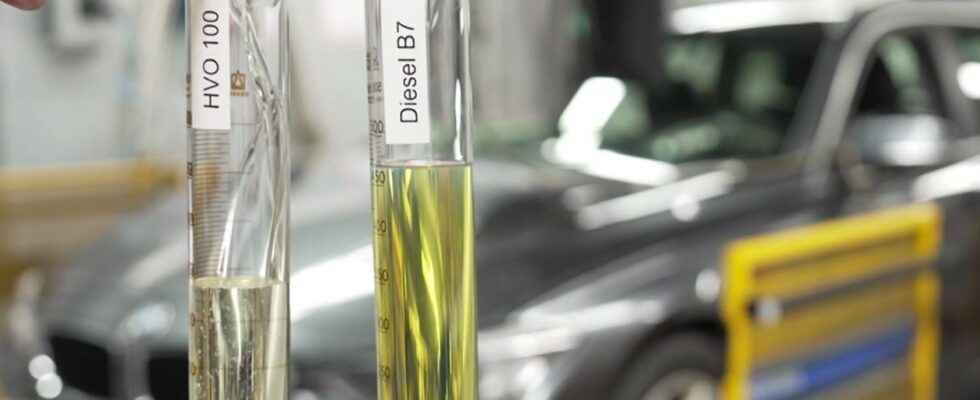CO2 emissions from road traffic must fall significantly in order to achieve the climate targets. There is a consensus on this – the “how” is still being discussed. One thing is clear for the ÖAMTC: electromobility will play a central role in this, but it will not be enough on its own. The club has therefore tested biogenic and synthetic fuels in practice together with its partner organisations.
“In addition to a large number of accompanying measures, we advocate the rapid and widespread use of alternative fuels for combustion engines,” explains ÖAMTC chief technician Thomas Hametner. “The advantage: The existing fleet can be operated with less CO2 or almost CO2-neutral, depending on the degree of admixture with the fossil fuel.” An increase in pollutant emissions was also not measured. The opposite was the case with the HVO diesel substitute: The pollutant emissions fell slightly in the test and the engine’s response behavior improved thanks to the higher ignition quality of the fuel. Tests were carried out on the laboratory test bench to determine whether the vehicles would comply with the requirements for approval even without fossil fuels.Together towards the (climate) goalTwo types of alternative fuels were examined: those synthetically made from electricity, water and CO2 (that of the air or industrial emissions) generated eFuels and the diesel substitute HVO (Hydrogenated Vegetable Oils, i.e. hydrogenated vegetable oils), obtained from waste oil and fat. While the latter are already being produced on a larger scale, eFuels are still in their infancy – manufacturers are waiting for a clear commitment from politicians before investing in expensive systems. “Ramping up production and manufacturing large quantities will of course take time,” says Hametner . “However, a mixture of alternative and fossil fuels is also possible, so that the proportion of e-fuel can be continuously increased. In this way, the proportion of fossil fuels in the existing fleet could be continuously reduced, which would make an important contribution to environmental protection.” It is also clear that energy from renewable sources must be used to produce eFuels so that they can exploit their CO2 advantage. In Austria or Europe that is hardly possible. Therefore, production on an industrial scale only makes sense in windy and sunny regions of the world. “However, this entails long transport routes, which significantly reduces efficiency. On the other hand, green electricity is not always available in this country for charging e-cars – electricity imports are necessary, which in turn has a severe impact on their ecological balance. And: In contrast to electricity, eFuels can be stored and transported relatively easily over long distances. If we want to achieve the climate goals, then we have to use all possibilities – this includes electromobility as well as alternative fuels,” says the expert.These vehicles were used to test the VW Golf VIII 2.0 TSI, built in 2022, petrol (E10)/eFuel (E10 ) VW Golf VII 1.4 TSI, 2018, Petrol (E10)/eFuel (E10) Ford Fiesta 1.0 EcoBoost, 2016, Petrol (E10)/eFuel (E10) BMW 320d touring BluePerformance, 2013, Diesel (B7)/HVO 100 VW Touran 2.0 TDI DSG, 2022, Diesel (B7)/HVO 100
source site-13
